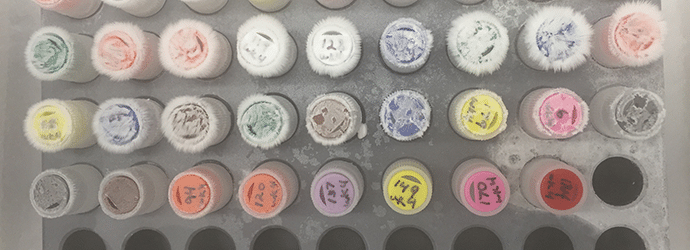Ribonucleases (RNases). We’ve been giving them a hard time here lately. We’ve been talking about how they are the bane of the lives of researchers who work with RNA.
And we’ve told you how to find their weaknesses and shown you a myriad of weapons that you can use to kick their RNase butts.
But maybe we’ve gone a bit too far. In actual fact, RNases are essential for the survival of all living organisms – even scientists working hard to keep their RNA samples intact. And they can be very useful tools in the lab.
Today I want to smooth things over a bit and perhaps make you a bit more appreciative of the good side of RNAses. Let’s take a brief glimpse into how RNases help keep you alive, and how you can use them in the lab.
Some Natural, Heroic Functions of RNases
At least 21 types of RNAses exist in eukaryotes, archaea and bacteria combined, where they perform vital and heroic functions. Here are a just a few:
- RNase H removes the RNA primer in DNA replication
- RNase P processes tRNA molecules
- RNase A clears cellular RNA that is no longer required and is secreted in copious amounts by some cells in your body
- RNase L is one of our first lines of defense against viruses and will destroy all RNA within the cell in response to a viral infection
Using RNases the Lab
Even when we overproduce them, crack open the cells they live in and store them in overcrowded vials until we are ready to use them, RNases still step up to the plate and do the job for us.
Mammalian RNase A
- is the most commonly used RNase in research
- is specific for all single-stranded RNA
- cleaves after C and U residues
- is one of the hardiest enzymes around due to a series of intramolecular disulphide bonds that partially hold the 3D structure together even after denaturing, allowing the enzyme to retain some activity
- is used to degrade RNA during purification of DNA
- is sometimes used in combination with the fungal RNase, RNase T1
RNase I from Escherichia coli
- degrades single-stranded RNA
- cleaves after all 4 nucleotides
- unlike RNase A, RNase I can be inactivated by heating samples to 70°C
RNase H from eukaryotes
- has the unique ability to cleave RNA found in a DNA:RNA hybrid leaving only single-stranded DNA
- is used in reverse transcription reactions that create cDNA to remove the RNA template
- used in nuclease protection assays
RNase T1 from fungus
- degrades single stranded RNA with impunity
- specifically cleaves single-stranded RNA after G residues
- is activated by detergents
- is used in the lab to destroy denatured RNA prior to sequencing
Now go forth with a greater respect for RNases, their importance and their powers for good. (But don’t feel bad about kicking their asses when the need arises).






